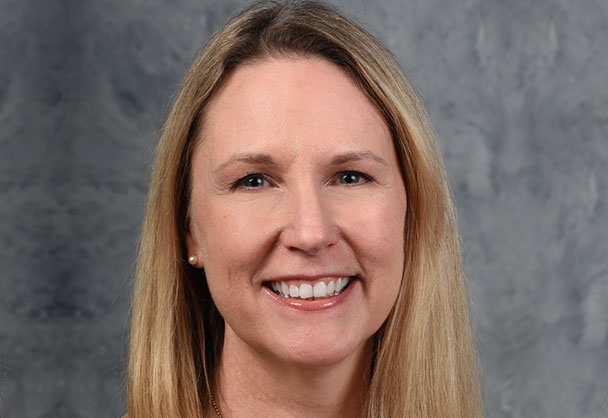Safety and Savings in IV Automation
Podcast Episode 22
Introduction
Recent technological advances have provided a solution to historical challenges with IV automation. These enhancements allow technicians to increase production and support greater accuracy while reducing human error or variation risks. Huntsville Hospital in Alabama was faced with a choice to implement IV automation. To answer that question, they had to go back a decade to their primary goals, which, both then and today, are safety and savings. IV robotics helps bring those two goals together.

Berkley Sykes
Pharmacy Operations Manager, Huntsville Hospital
Episode Highlights
Q: Can you give an overview of Huntsville Hospital and some of your early experiences with IV robotics and how you're using them at Huntsville?
Berkley Sykes: Huntsville Hospital is a 971-bed community hospital. It's located in Huntsville, Alabama. We are the flagship of twelve hospitals within the Huntsville Hospital Health System. As the hospital pharmacy operations manager, I provide operational leadership and strategic guidance for inpatient and outpatient sterile compounding, centralized services, inventory management, and pharmacy. Most ops managers get to wear many hats, but my favorite is sterile compounding and IV robotics. For the past 20 years, I've been able to provide direction for sterile and hazardous compounding regulations, IV workflow, technology implementation, and IV robotics. Both of those journeys began for us back in 2013, as well as clean room design construction throughout the hospital system. I've been fortunate enough that I've been highly involved in seven to eight cleanroom builds over the years, which I enjoy. And most recently, I led the design and construction of a standalone IV robotics center that was established to add our new Omnicell IVX Station compounding robots.
Q: So, Berkeley talking about your experience with IV robotics, I know it goes back a long way. Can you take us back to the early days of why Huntsville Hospital started to go down this path and decided to leverage IV robotic technology as part of your pharmacy operation?
Berkley Sykes: I've been asked why we chose IV automation. Our main objectives have stayed the same since the beginning. They are safety, and they are savings. And while I would love only to say safety, the savings help us pay for the safety. But fortunately, these two go hand in hand. IV Robotics allows us to prepare medications without human inconsistency safely, and that, in turn, reduces our dependency on outsourcing. So, this provides a two-pronged result of saving us a significant amount of money by not purchasing these expensive 503B drugs. It also reduces our exposure to the quality assurance issues that we all know are inherent with the 503B products.
It's been such a long, exciting road from when we first got IV robotics to now. We have the IVX Station, and one of the main reasons we made this change was based on regulations. I’m glad we've created this shift to IVX. It's going to be beneficial for us.
Q: When you implemented the brand new IVX station that you referenced, can you talk a little bit about what that transition looked like, the overall implementation process itself, and then any early impacts that you've seen?
Berkley Sykes: As with any significant go-live, I'm sure you can close your eyes and picture this. All the people running around and planning and working and making this happen. It was hectic, but many Omnicell people were involved in the project for weeks. We had engineers, and there was project management, a product team, and all kinds of people in and out who were helping us. They were fixing things and educating and teaching us what to do. And a big part, too, is that they were listening to us. The leaders and the developers at Omnicell are always thinking about our best interests. We've already had some releases of some new updates based on our program's needs, and they have our best interests in mind for future roadmap updates. That part has been just incredible for us.
Q: Do you have any other advice you would give to some of your peers at different hospitals and health systems around best practices for gaining that support and adoption with other stakeholders within your organization?
Berkley Sykes: It's such a good question, and it's something that hospital and pharmacy leaders struggle with. Robotics can be very complicated. Think about your pharmacy, where you want to be, how it elevates your pharmacy, and the safety it brings. And so, to be able to sell that, one of the big pieces is safety. And all those things you mentioned are so proper about removing the humans and how much safer the robot is just inherently in its design. So, looking at errors may be that you've had with manual preparations or errors that you've had from 503Bs, mainly if you outsource. If the question comes up, how will you pay for this? If you are outsourcing, that's number one because you can bring all that stuff in-house. IV robotics also helps manage waste, meet regulations, and have ready-to-use products that you do not have to outsource.
Q: You mentioned going live with the new IVX station earlier in 2022. Can you share metrics, wins, or successes you’ve had since implementing the brand-new IV robots?
Berkley Sykes: We have been delighted with the progress we've made so far since our go-live. That was mid-July, and we've had about 7,900 preparations utilizing the IVX. Just last week, we started moving into our second phase, adding some new drugs, and we're just going to keep adding more preps, and we expect our volumes to continue to increase. We expected to have some high yields based on our experience with the IV robots, but these are just truly impressive and consistent. We've been at 98 percent for both the robot passes and the pharmacist quality checks. That's been fantastic. The technician and robot operators have been amazed by the throughput rate and speed.
Q: Sterile compounding has undergone significant technological, regulations, and oversight changes for years. With that said, where do you see the future of IV automation and where it may be heading?
Berkley Sykes: I've watched Omnicell adapt to the changes and stay a step ahead for the sake of their customers and our patients. And this includes improving old technology, listening to our requests and needs, for example, the faster speed and increased reliability, and helping us continually address how IV Robotics is different in terms of safety to regulatory agencies such as USP and FDA. And I hope it will all culminate in recognizing IV robotics compounding as vastly safer than human compounding.
Q: What would you like to say to others thinking about implementing IV robotics into their health system?
Berkley Sykes: I was exactly where many of our listeners were years ago. And I know what many of them may be thinking because I was thinking the same thing. And that is that IV robots. They seem scary. They are expensive, and they seem complicated. They are complicated. They are not toasters. That's what I like to tell everyone. But any hospital can overcome these fears.
With dedication and partnership, they can realize the value and potential of IV Robotics as a means to enhance patient safety and reduce costs. Like we've been talking just. As with any worthy effort, there will be growing pains, and you must be patient. But I have never once in all these years regretted having IV robotics. I'm passionate about it, and I hope to see a day when all IV preps are going through some technology, IV workflow, and robotics in the name of safety. I really, truly hope to see that one day.
DISCLAIMER
The Future of Pharmacy Podcast is produced and distributed by Pharmacy Podcast Network. The views and opinions expressed in this podcast are those of the authors and do not necessarily reflect the official policy or position of any other agency, organization, employer or company. Assumptions made in the analysis are not reflective of the position of any entity other than the author(s). These views are always subject to change, revision, and rethinking at any time and may not be held in perpetuity.
 Back to Podcast
Back to Podcast

